Paris-based Lebanese artist Ali Cherri created a powerful, theatrical atmosphere on the lower ground floor of the Parisian gallery Imane Fares for his show A Monument to Subtle Rot. Illuminated in a pitch-black room, a bronze Egyptian mask is frozen in a moment of quiet reflection. “It’s actually from an Egyptian death mask originally made of wood, which I later cast in bronze. So, it still looks like wood, with all the intricate details, but I wanted to explore this shift in material —from warm, living wood to bronze—creating a sense of distance.”

In contrast, bathed in daylight on the gallery’s ground floor, the sculpture of an eagle perched on a podium takes center stage. Its legs—lean and muscular—are cast in bronze, while its body is made of mud. “Bronze is heavy, long-lasting, and represents history from the top down. Mud, on the other hand, is something anyone can work with; you just mix earth and water to create a shape.” Over time, a tension builds between the two materials, with the bronze eventually yielding to the mud, which Cherri sees as a poetic reversal of power. “Even though mud is weaker than bronze, its moisture can corrode and weaken the bronze, reversing the power dynamic.”

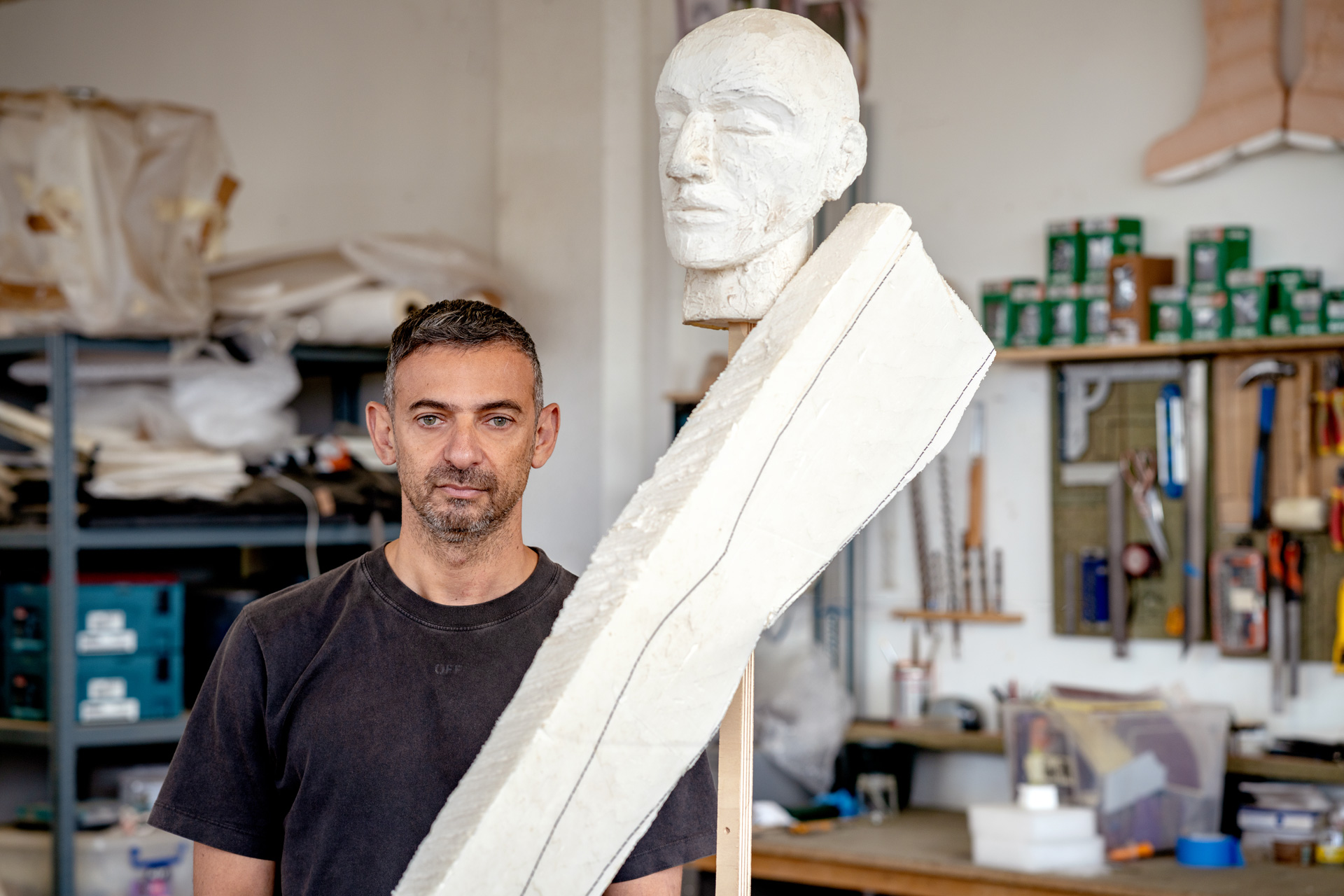
The same muscular legs are echoed in a new sculpture currently being crafted in the studio. “It’s just an early draft, to get the volumes right before we start refining it,” Cherri explains, noting that he is delving into figures of authority and fascist iconography for an upcoming project at the Vienna Secession. “Think of it as a body machine, like an animal: highly efficient, an imagined man of the future, ready to fight and die for his country,” he adds, alluding to the inherent contradictions woven into the concept.
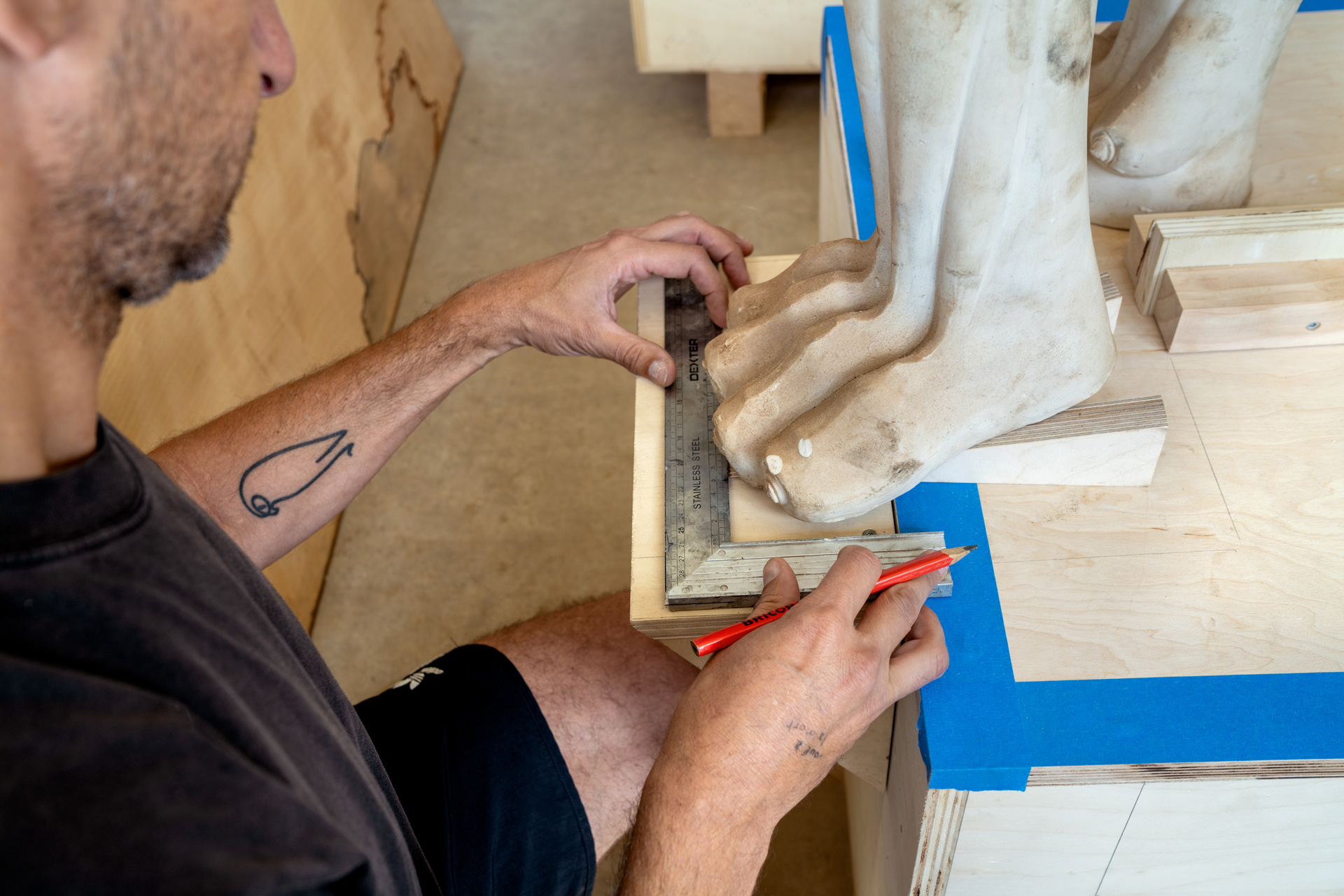
As Cherri leans in to work on the paws, two tattoos become noticeable: a simple owl on his left arm and barely visible handwriting on his right hand, reading “Voué à la mort” (“destined to death”). Both can be seen as nods to Stoic philosophy. The owl, thriving in the dark, symbolizes the Stoic approach to adversity, where wisdom guides one through life’s challenges with calm and purpose. The handwritten motto serves as a reminder that embracing death is essential to living a virtuous and fearless life.
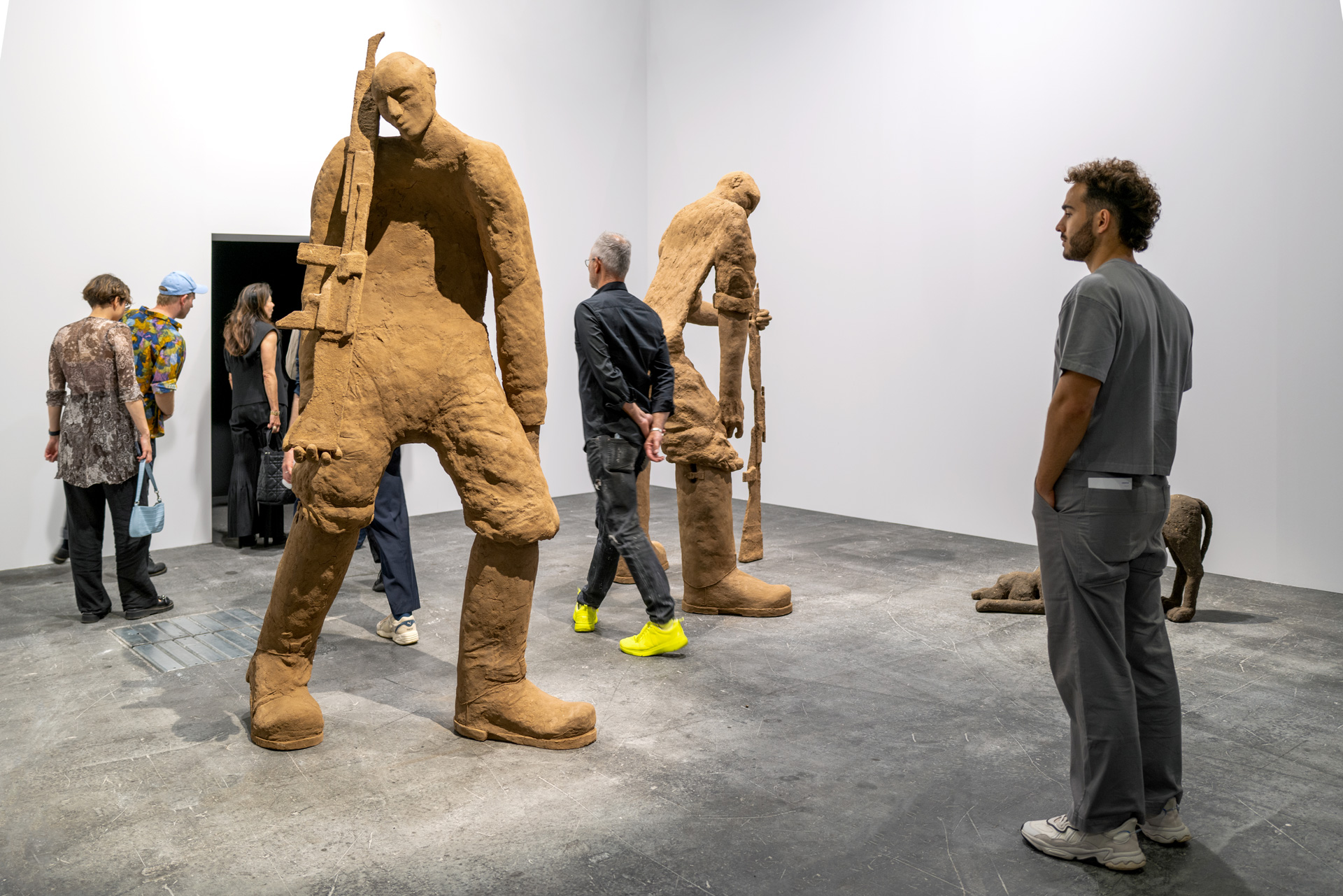
Emotional fortitude, a core aspect of Stoic philosophy, also aligns with the concept of a soldier—one of the key themes Cherri explored in his work for Art Basel Unlimited 2024. In this installation, Cherri presented two monumental soldier sculptures, dozing on their feet, alongside a dog in a playful bow, all crafted entirely from mud. Visitors quietly slipped past these figures to enter a room where Cherri’s film The Watchman was screened. The film follows a soldier stationed at the division line between northern and southern Cyprus, “a tense zone, not quite a border, but a hot military point,” endlessly waiting for an enemy that never arrives. “Sometimes you have to invent the enemy just to give meaning to the waiting,” Cherri explains. “That’s what happens in the film, the soldier begins imagining an approaching army as a way to justify his existence.”
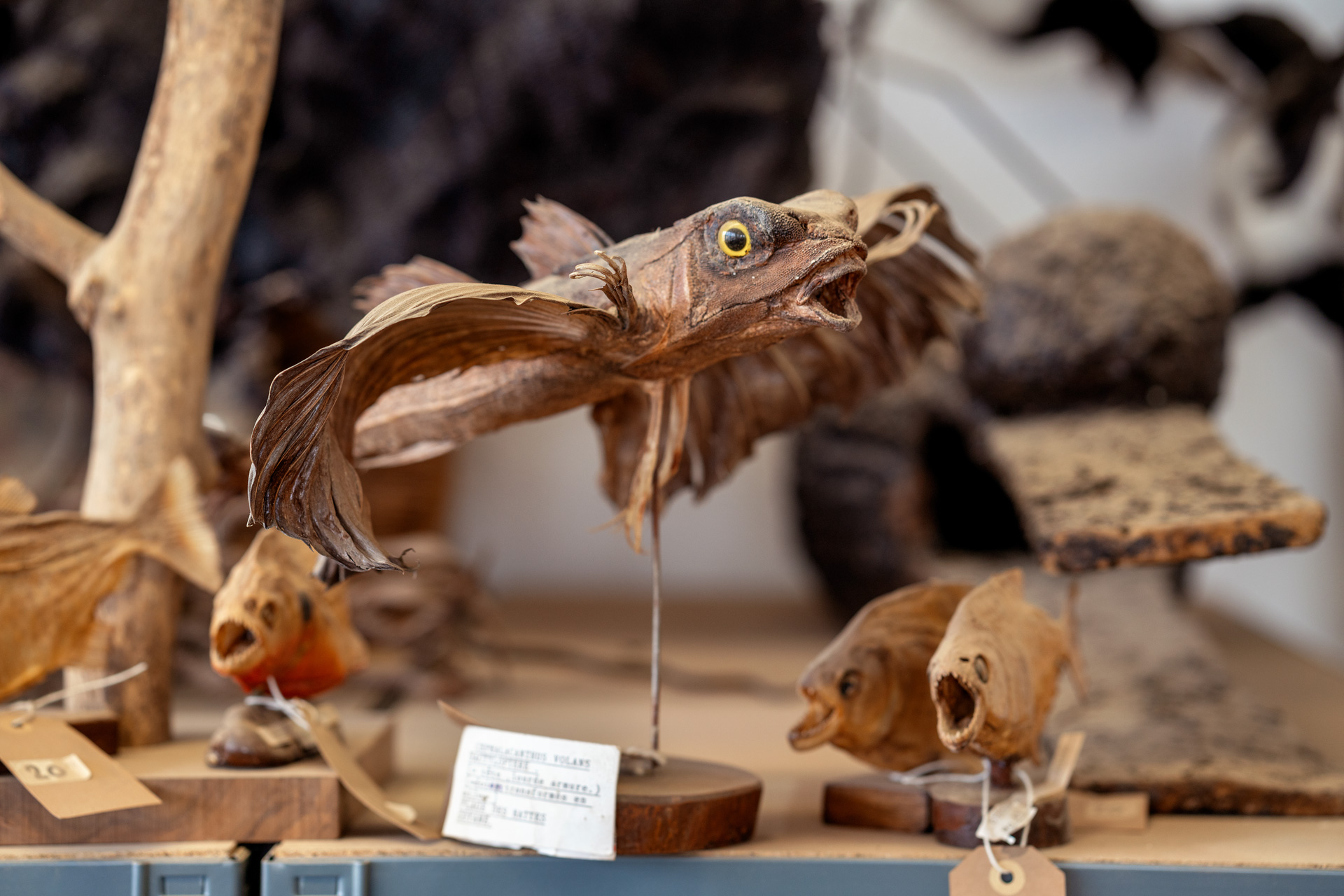
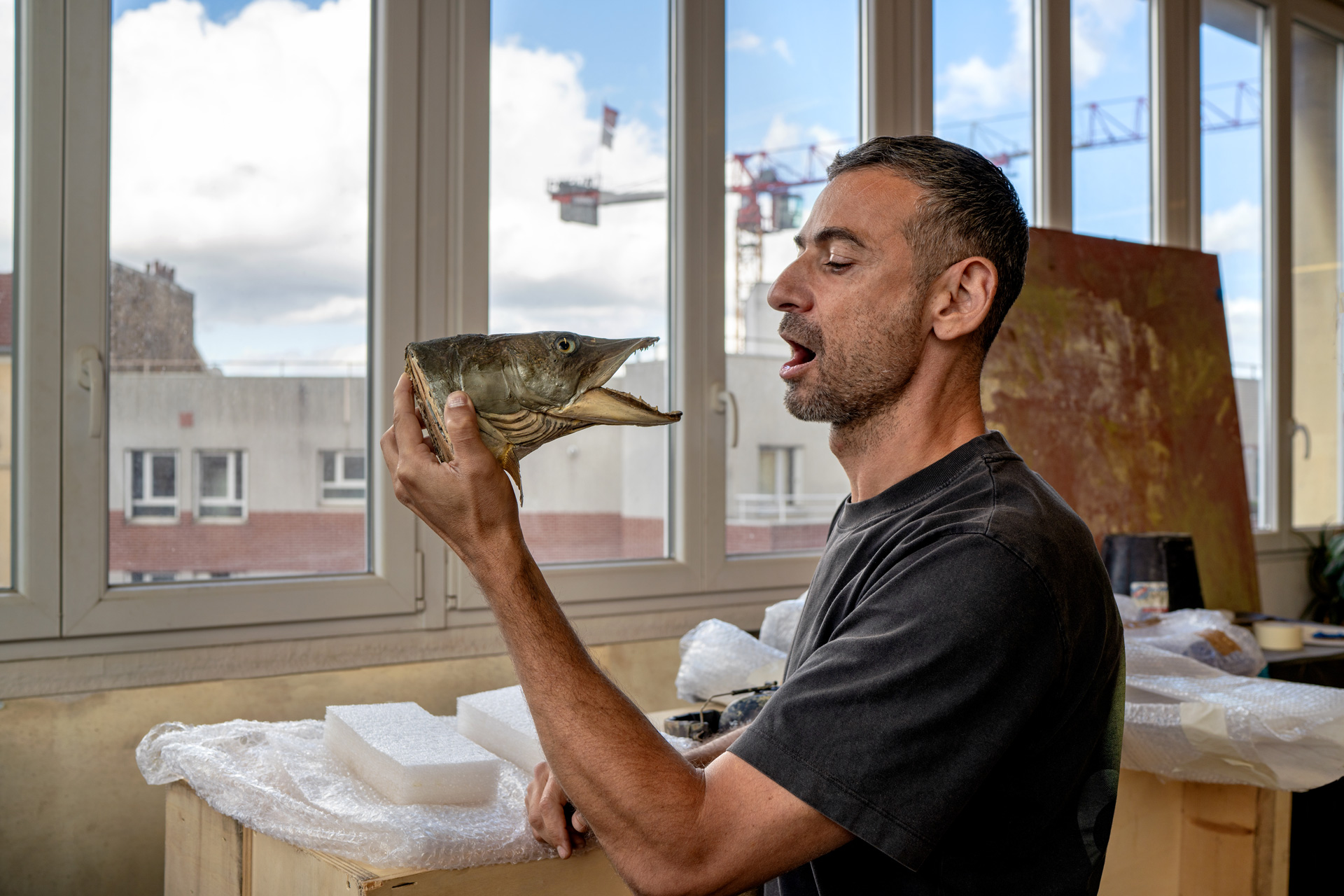
In the film, the enemy soldiers are depicted with sealed eyes, an unsettling image evoking thoughts of blindness, introspection, or a refusal to see, quite the opposite of Cherri’s collection of taxidermy fish, whose eyes remain permanently open. These odd, preserved creatures, with their frozen expressions and ancient origins, have become part of Cherri’s carefully curated collection as he works on a diorama about the Red Sea. “It’s similar to those at the Natural History Museum,” Cherri explains, “but mine focuses on fictional sea creatures, inspired by stories from A Thousand and One Nights and Kalileh o Demneh, mermaids and all these mythical beings, exploring what literature has invented around the Red Sea.”
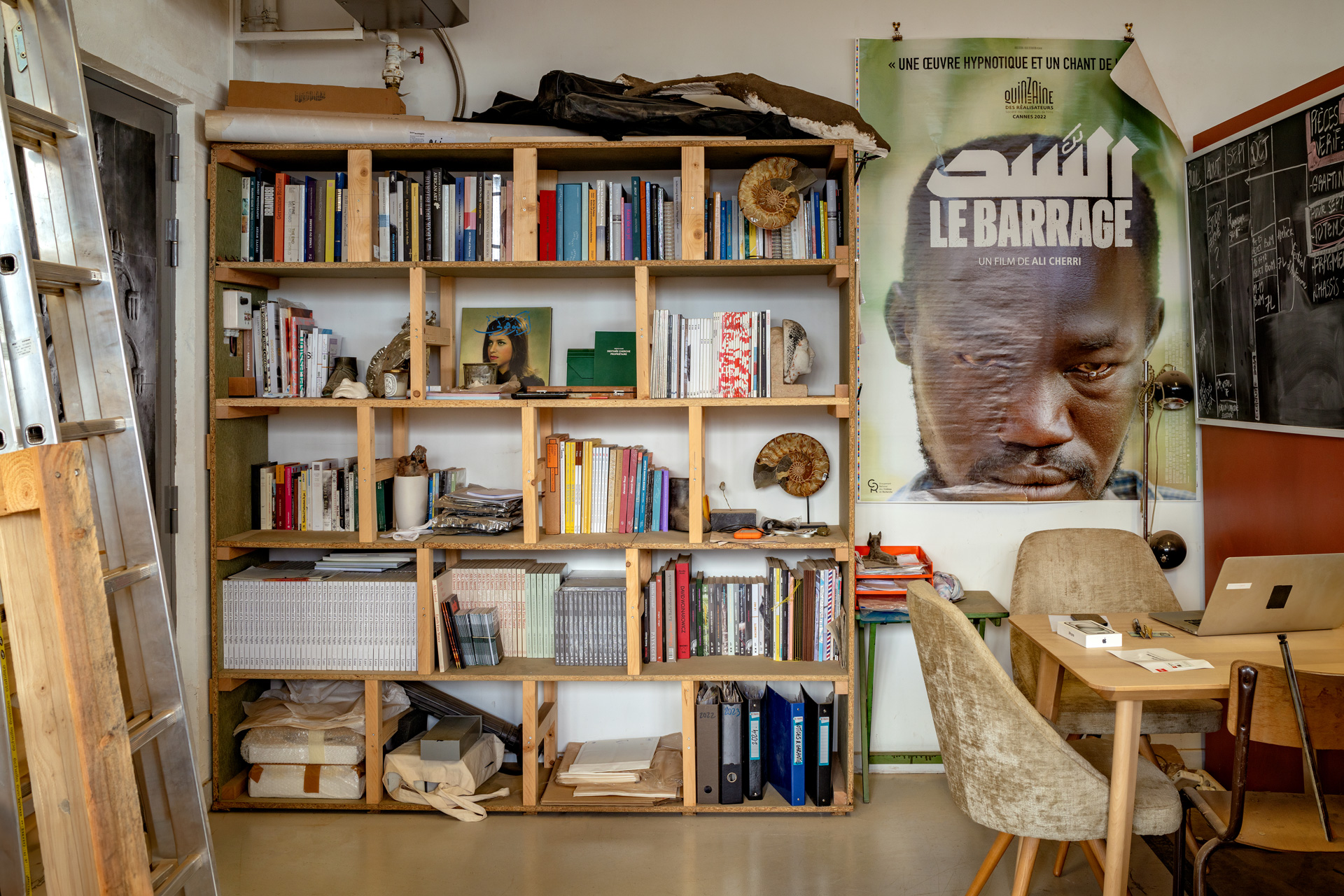
Also part of the collection, ammonite fossils are tucked into quiet corners of his library, their spiral shapes beautifully preserved in stone. Each book and fossil tells its own story, creating together a dialogue between human culture and the natural world, as does Cherri’s feature film The Dam.
Next to the bookcase, the creased poster of the film focuses on the tear-filled eyes of the protagonist, Maher. By day, he works in a traditional brickyard near the Merowe Dam; by night, he secretly ventures into the desert to construct a mysterious structure out of mud. “The Merowe Dam is among the most destructive in the world. Its construction affected everything, the water, the land, and people’s bodies,” Cherri explains, noting that its impact extends to the imagination as well. “Oppressive regimes rob people of their ability to imagine.”
Cherri envisions a world where nature and culture coexist in a delicate balance. The Gatekeepers (2020) series, comprising four totems, was first installed at the entrance of the Museum of Fine Arts in Marseille. There, they not only welcomed visitors but also sparked a dialogue with the Natural History Museum across the way. “When I spoke to the two directors, I was surprised to learn they had never collaborated,” Cherri recalls. To bridge this separation, he introduced taxidermy specimens from the Natural History Museum into the Fine Arts Museum, unusual objects for that setting. “It ties into the famous Guerrilla Girls quote: ‘Do women have to be naked to get into the Met Museum?’ In my case, I’m asking, ‘Do animals have to be dead to enter the Beaux-Arts Museum?'”
Do animals have to be dead to enter the Beaux-Arts Museum?
Ali Cherri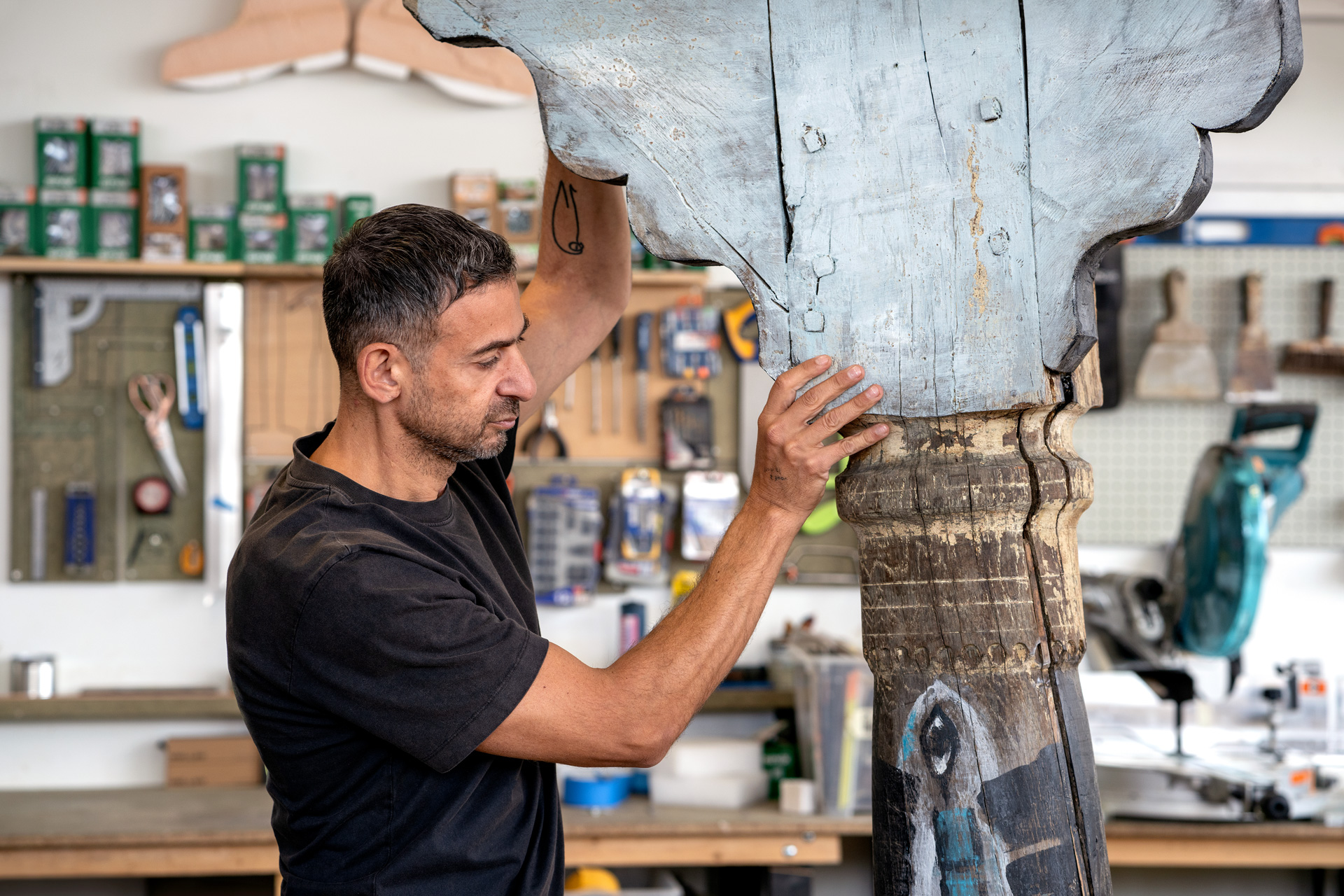
The first totem in the series is currently being restored and reappropriated with new objects in preparation for its journey to the Modern Art Museum in Marseille next June. As Cherri lifts the totem from the workstation where it lies, the striking drawing of an eye on the post shifts from the horizontal to point like an arrow toward the crown, which remains undecorated for the time being. His plan is to install a mask there, an apex figure that will blend natural and man-made materials.



Now that the totem is elevated to its full, towering form, a poster in the background stands out. It features the marble head of a woman resting on a mirror, atop a vibrant red surface. A single prosthetic eye interrupts the classical beauty to declare the sculpture is not merely a relic of the past but something alive, something watching. What is more, the juxtaposition of the unsettling eye with elegant marble evokes both beauty and discomfort, prompting reflection on the intersection of history and restoration. Cherri created this piece for the If You Prick Us, Do We Not Bleed? exhibition during his artist residency at the National Gallery in London in 2021, where he explored five incidents of vandalized art, including the infamous slashing of Diego Velázquez’s Rokeby Venus (1647–51) by suffragette Mary Richardson in 1914.

Another image on another wall interrupts the studio’s row of north light windows. “It’s an imagined image of Sudan,” says Cherri who commissioned the work from a Sudanese artist and used a digital enlargement as a backdrop in scenes from The Dam. In the studio, the colors of the painting seem to have spilled from the canvas into the real world, or perhaps the painting itself has come to life. The warm, earthy hues of both reality and art blend seamlessly to create the atmosphere of a dreamlike desert scene.
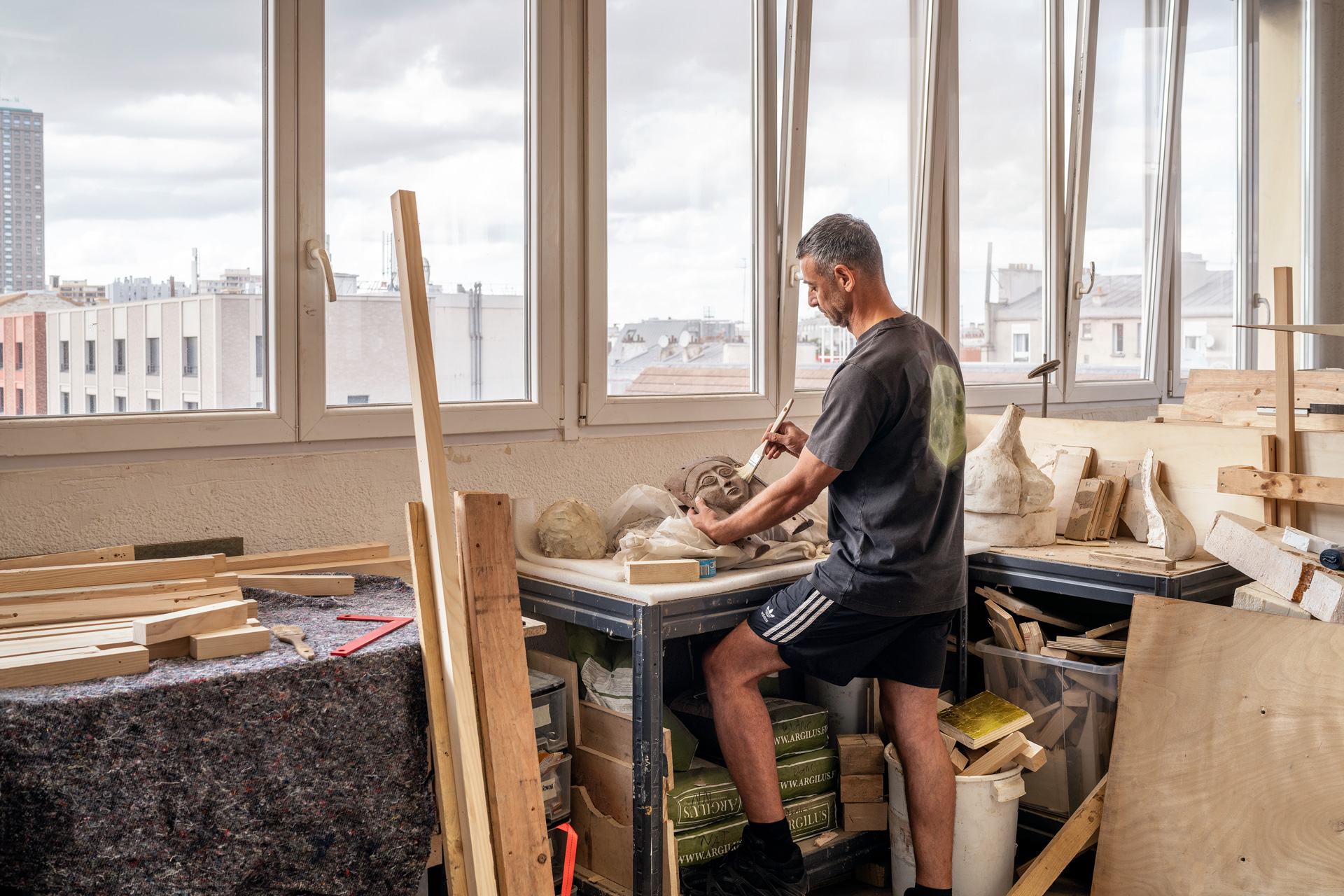
In this setting, Cherri assumes the role of a skilled archaeologist, carefully brushing dust off an Egyptian mask with almond-shaped eyes and a postiche—a symbol of royalty. “I bought it at an auction, but I think it’s fake. The wood doesn’t seem old—it looks modern, though it was sold as authentic. I find that intriguing,” Cherri can draw on extensive experience with auction buying.
He spent a year visiting various auction houses to acquire a selection of artifacts and curiosities for his installation Fragments, which he later presented at the Egyptian Museum in Torino, home to the largest collection of Egyptian antiquities outside of Egypt. “It’s striking how accessible these objects are, you could literally buy a sarcophagus today if you wanted to.” However, he chose to buy smaller pieces, which he arranged on a large light table. “There, they cast no shadow and appeared suspended, as if they had no roots or connection to the earth they came from.”
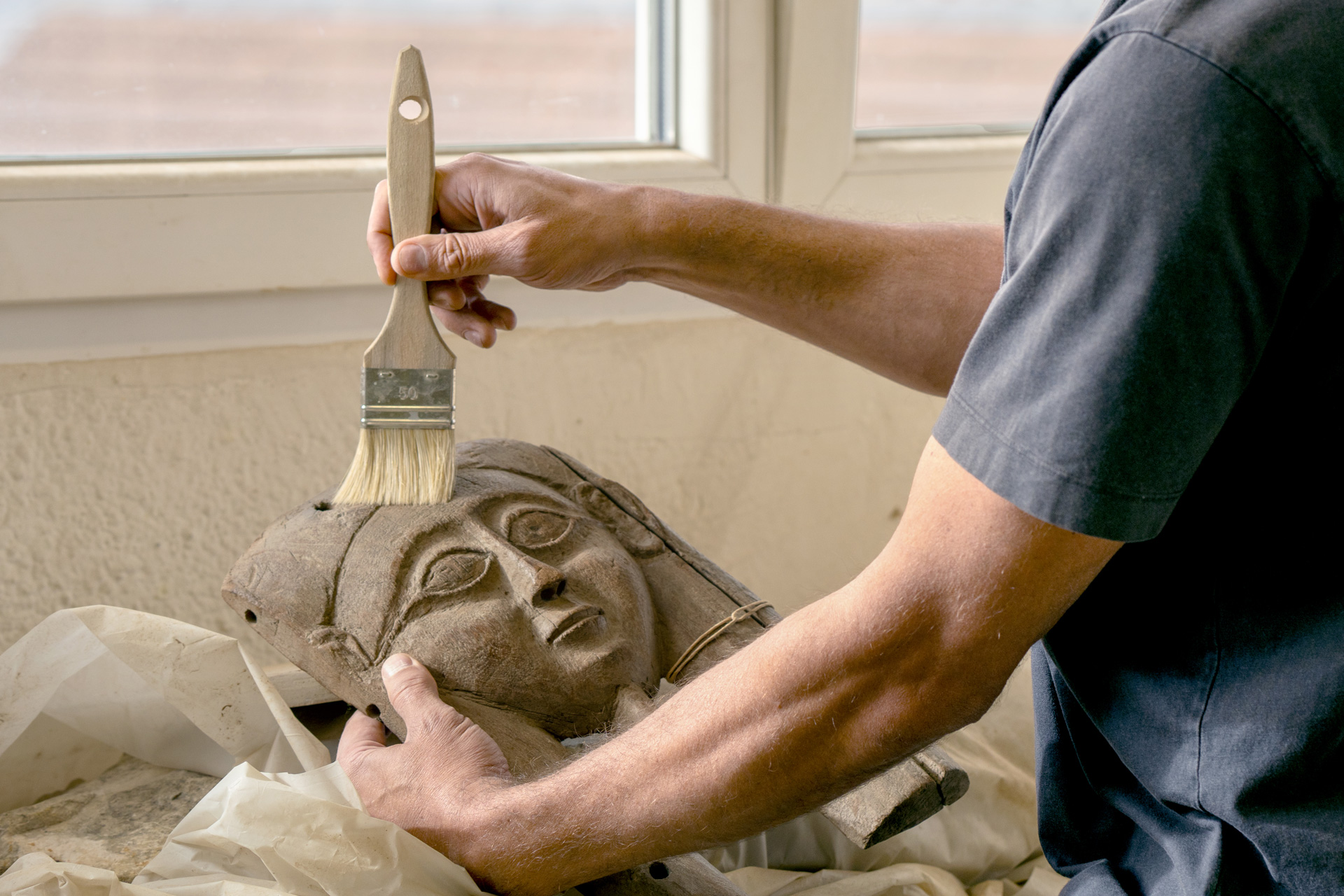
Now, he plans to return to Torino for the bicentenary celebration of the Egyptian Museum this year. For the occasion, he intends to “restore” the eyesight of a selection of artifacts whose eyes were removed by looters during colonial times for the precious stones. Cherri will animate these objects, much as he did with the marble head at the National Gallery in London, making viewers feel watched, engaged, and acknowledged as they pass through the new agora. A subtle shift in material will provoke a significant shift in perception, creating a sense of intimacy and connection. “I’m creating prosthetic eyes to give them back the ability to see. It’s something I keep returning to.”
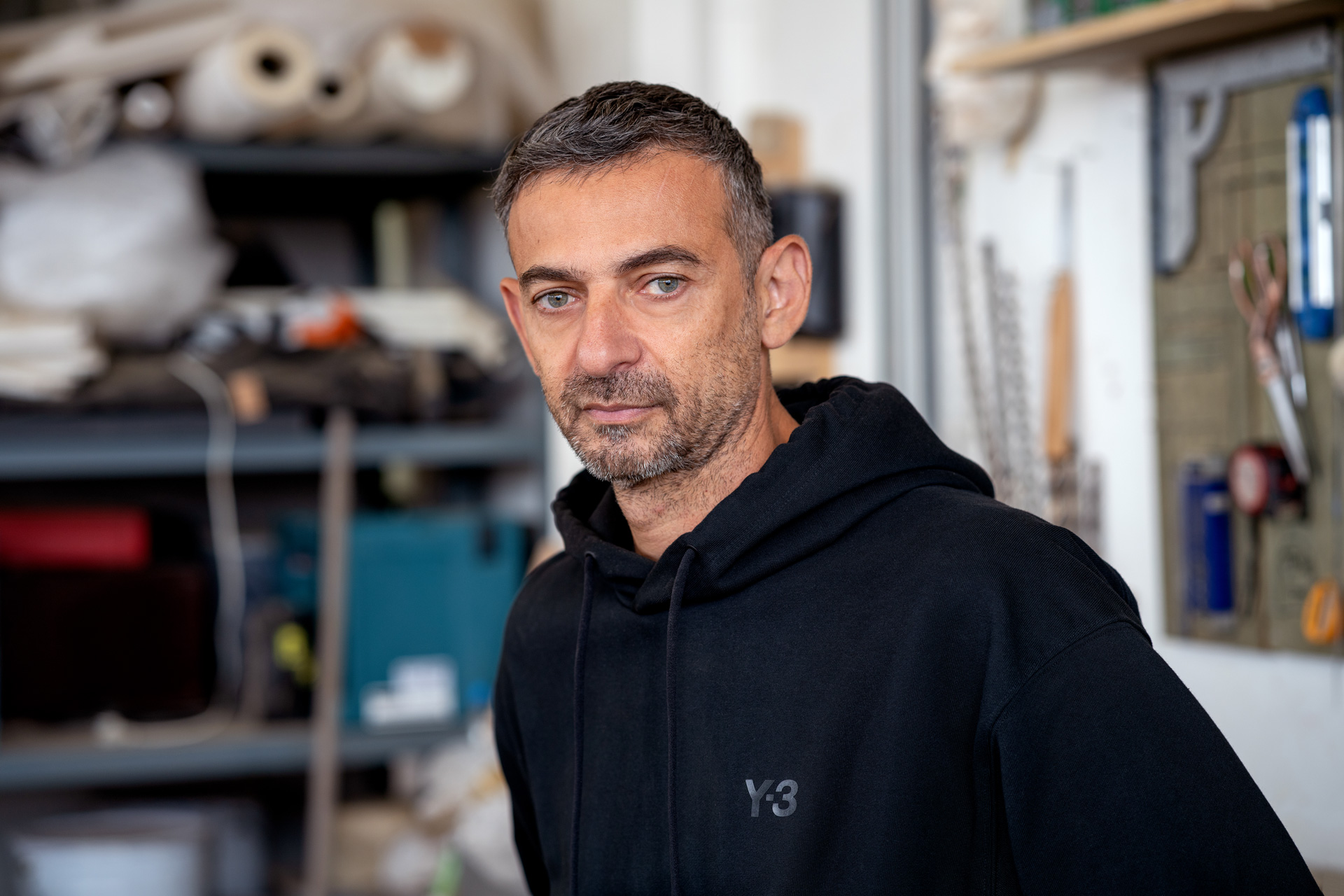
Paris, 2024. All photographs and text © 2024 by Alexia Antsakli Vardinoyanni – www.artflyer.net



